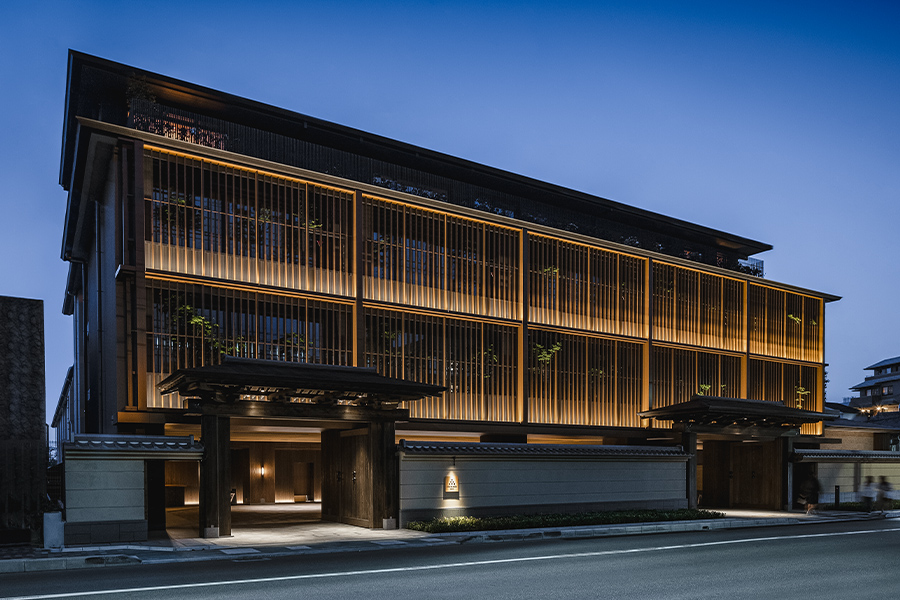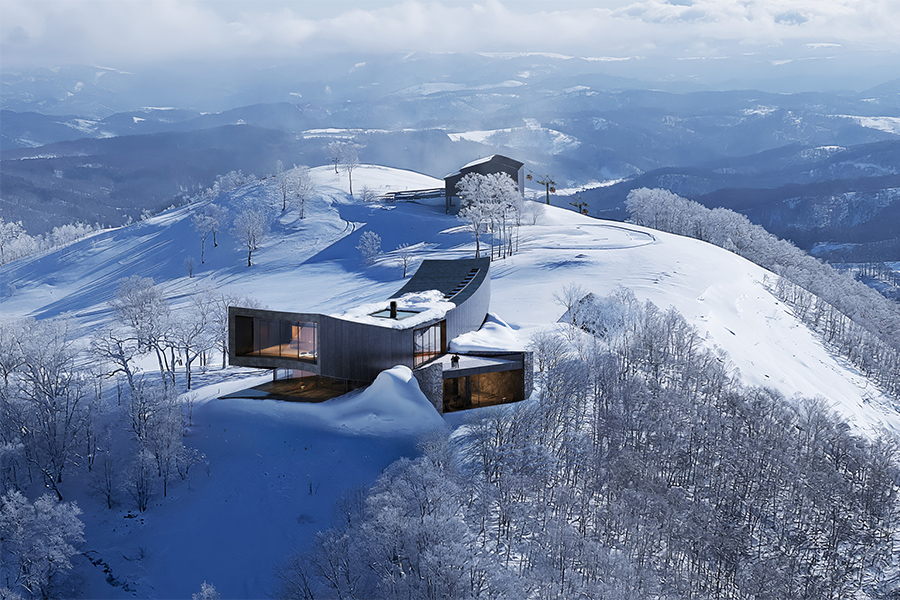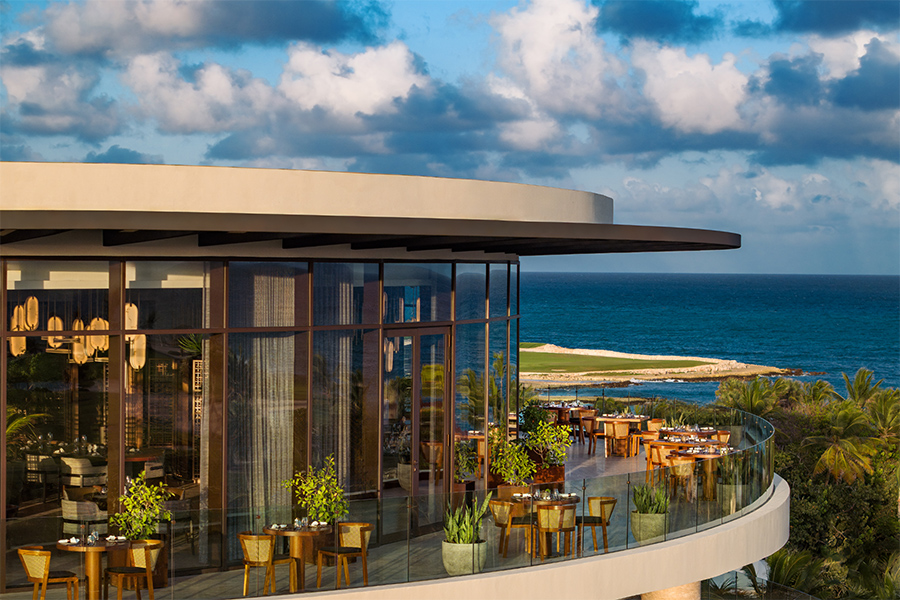In 794, Emperor Kanmu relocated Japan’s capital from Nagaoka-kyō to Kyoto, then called Heian-kyō, ushering in the glorious Heian period. The imperial court’s golden age, flourishing until 1185, and its artistic legacy distinguished by abundant poetry and literature is what enthralled Blink Design Group when crafting the Six Senses Kyoto.
“There’s nothing like learning from a local expert, and luckily our client was a history buff. He told us about the Myōhō-in Temple across the street from the hotel, and the Heian era it was built in set the tone for our concept,” explains Clint Nagata, founder and creative partner of the Singapore studio.
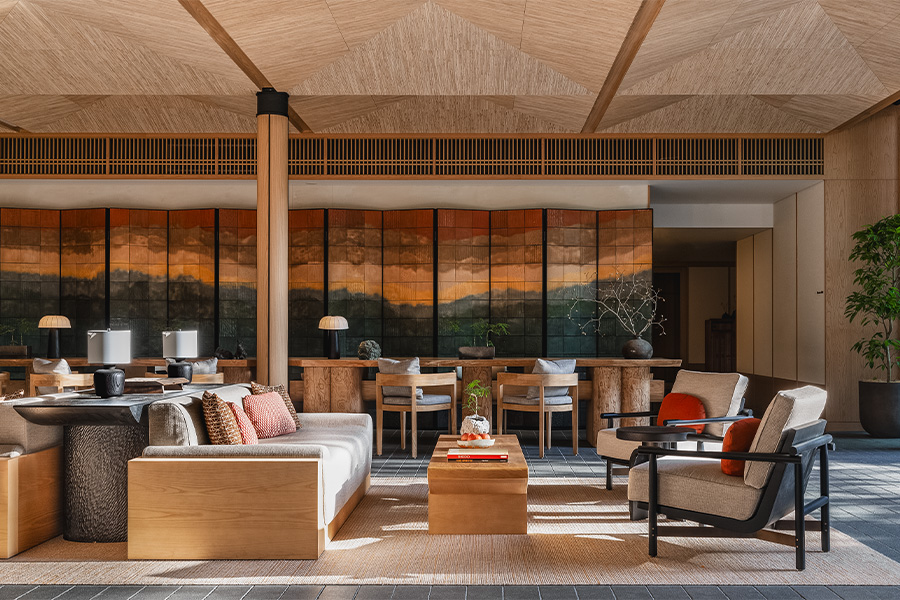
In the lobby, a Raku-yaki ceramic tile screen nods to the 11th-century novel The Tale of Genji
Located downtown, among the winding alleyways of the well-preserved Higashiyama district, the 81-key Six Senses Kyoto marks the luxury wellness brand’s first foray into Japan (Blink is also handling the design of the forthcoming Six Senses property in France’s Loire Valley), and Nagata was keen for it to reflect and honor a local perspective.
“We knew we needed to dig deep to distill the essence of what it should be. There was a lot of research and understanding of the past to weave the story together,” he says. “I’m a fourth-generation Japanese-American, and through this process, I’ve learned about my own culture.”
Propelling Nagata and his team along the design journey was Miyabi, an ideal that embodied the refinement of the Heian period. As a proper homage, the aesthetic needed to be graceful and polished, so Blink incorporated the likes of ikebana, brocade, and Japanese metalwork.
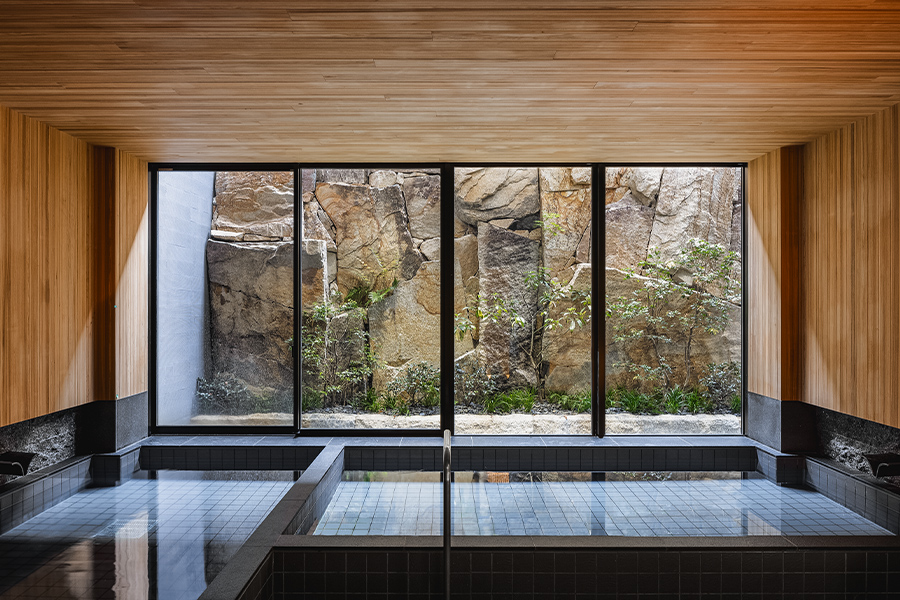
The spa’s hot baths, reminiscent of an onsen, are elevated by scenic views
But that elegance is balanced with asobi gokoro, the Japanese notion of playfulness. “Throughout the hotel, guests will discover subtle, whimsical details that relay Kyoto’s heritage, including design elements inspired by The Tale of Genji, Japan’s literary masterpiece, and other ancient Japanese folklore,” says Six Senses CEO Neil Jacobs.
In the lobby, for example, Murasaki Shikibu’s 11th-century novel is the impetus behind both the folded wooden ceiling that mimics the pages of a concertina book and the Raku-yaki ceramic tile screen referencing the Kyoto mountains immortalized by Shikibu.
One of Nagata’s favorite features in the lobby is the rippling bronze artwork that reimagines a Chōjū-jinbutsu-giga scroll of cavorting animals, including rabbits that at turns peek out from the top and hang upside down. “It’s something unexpected,” points out Nagata. “I like the quirky parts you have to look for to discover—these moments that give a place extra character.” Jacobs, for his part, is also a fan of what “can be considered Japan’s very first graphic novel or manga,” he adds. “I always spot something new.”
Another example is the kitsune masks that line guestroom corridors. Fashioned out of recycled washi paper, they reinforce the happiness-inducing powers of the fabled fox that regularly appears in ceremonial Kagura dances, while the animal’s illuminated eyes cleverly double as Do Not Disturb signs.
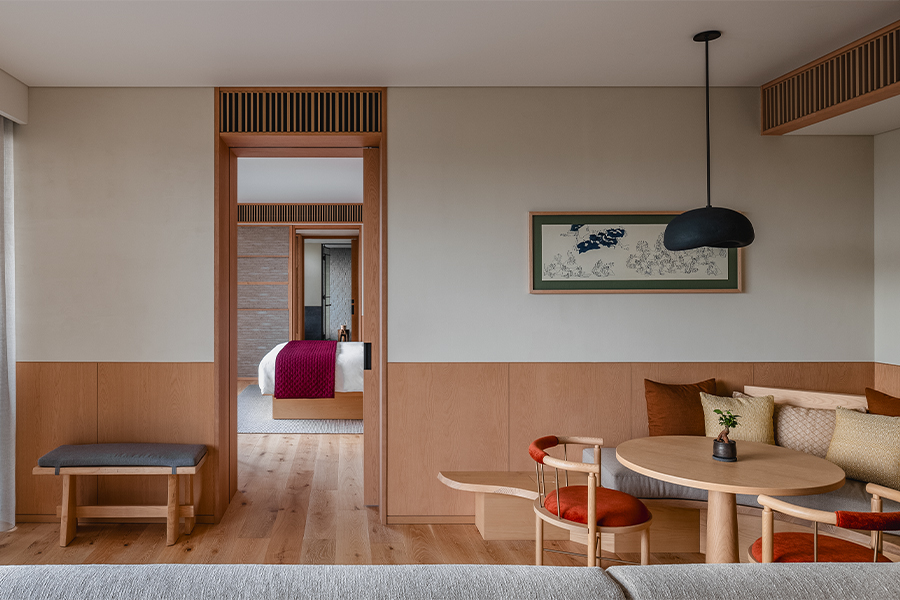
An intimate seating nook adds another layer of tranquility to a suite
Biophilia is also central to Blink’s vision, exemplified most notably in the greenery-laden courtyard and complemented by hanging plants and skylights. These lush elements are bolstered by earthy materials like Sudare bamboo blinds and Sakan plasterwork. “We took cues from the long and narrow site. The hotel is off a busy road and the idea was that once you leave the street everything looks onto the garden. In the lobby you’re always surrounded by nature, no matter which way you look,” Nagata says.
Reinforcing this organic sensibility is the restaurant Sekki, which fuses tie-dye Shibori patterns with Japanese wood joinery and curving banquettes, and Café Sekki—an ode to Kyoto’s rock gardens adorned with Japanese knots and woven rattan. At the moody cocktail lounge Nine Tails, shou sugi ban flooring contrasts with the bar counter’s Oribe tiles glazed a rich green. Meanwhile, in the spa, the pool area flaunts a particularly dreamy sheen thanks to an art piece that depicts ethereal clouds.
This transporting aura continues in the guestrooms, where sconces are reminiscent of handcarved wooden plates and headboards comprise panels that flip between red lacquer and geometric Asanoha motifs.
Custom art that draws from a Japanese folktale revolving around a mochi-making rabbit residing on the moon not only makes an impression but conceals the TV, “so that it doesn’t consume you,” as Nagata puts it. “It takes you out of this world and into another. There is so much going on in Kyoto and when you get to your room, it all disappears. You slip into a sanctuary.”
This article appears in HD’s April 2025 issue.

